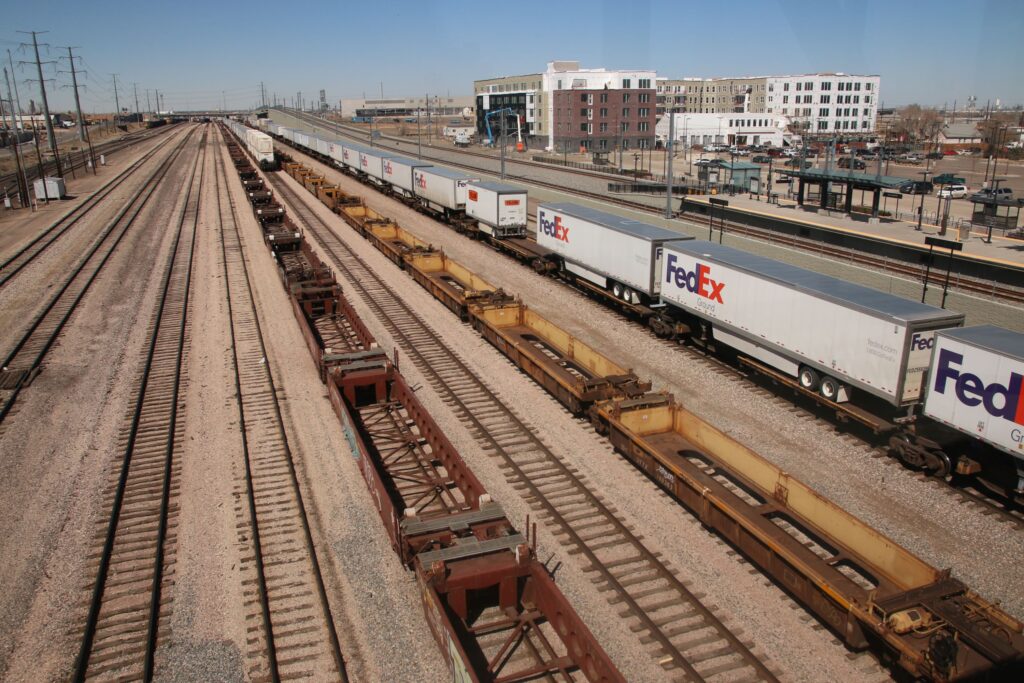By Ernest Gurulé
When a freight train more than a mile long went off the tracks near East Palestine, Ohio, two months ago, it got the nation’s attention.
The train, owned by Atlanta-based Norfolk Southern Railway, created a public health emergency for a community that, outside of Ohio, few even knew about.
But the incident also sparked a national conversation about the safety of trains carrying hazardous cargo that routinely pass through cities big and small every day, including Denver.
At-large Denver City Council member Debbie Ortega has been talking about the movement of hazardous materials through the city via interstate and rail for years, particularly in the Globeville, Elyria and Swansea neighborhoods.
“I’ve given my life to serving the people of Denver because I love this city,” she said. “The GES (Globeville, Elyria, Swansea) neighborhoods are not strangers to the risks associated with living near freight railway corridors.”

In a recent City Council committee meeting, Ortega revived a proposal from 2021 that would deny permit applications for development within 100 feet of a freight railway unless the application contains certain attestments, including an evacuation plan and mitigation measures.
In a presentation, Ortega stated there are 1,465 household units in Denver within 150 feet of railroads, with another 22,163 within 1,000 feet and 75,030 within a half-mile. Four “public assembly locations” are within 100 feet or railroads, 10 are within 1,000 feet, and 58 are within a half-mile. Some of them include Mile High Stadium, Coors Field, Ball Arena and Elitch Gardens.
Additionally, Ortega provided data from the Denver Office of Emergency Management that stated between 2011 and 2015, the number of railroad shipments carrying hazardous materials tripled one year and quadrupled another.
The committee postponed the proposal to deny permits near railroads with conditions to a later date that has not yet been scheduled. The GES neighborhoods, each among the oldest and most economically distressed in Denver, are not unlike a lot of communities across the country situated near highly used rail corridors and potentially in danger of an East Palestine-like occurrence.
Steve Long, a transportation and civil engineer at Metro State University, said their location and rail activity are more coincidence than design.
“You have to remember how the system was built,” he said. “The railroad was there long before the communities. Railroads were traveling across the Great Plains and there were no highways there, it was isolated. Cities built up around them.”
Long said “nothing is going to be perfect,” when it comes to railroad shipments of hazardous materials, and that he wasn’t surprised that the disaster in Ohio happened. Regardless of who came first, said Ortega, if a dangerous accident happens in Denver as they have many times across the country, there needs to be a plan and residents need to know it.
“We must assure residents have clear evacuation routes … and that city agencies have the power and responsibility to review developments near rail lines to assure steps are being taken to mitigate risk,” Ortega said.
She also said she wants the confidence of knowing that the city and residents will be made whole in the event of a hazardous waste derailment. Despite periodic accidents, Long said, it’s his opinion that rail is still the safest way to move dangerous cargo.
“Trucking on the highway is a lot more hazardous (than rail),” he said.
On the highway, because of the proximity to others, he added, there’s a higher chance of human error. Although most people never think about it, the amount of goods, including chemicals, moved by rail is vast. It is estimated that freight moved by rail, more than 2 trillion ton-miles annually, accounts for more than 40% of all freight moved across the country. Included among this freight are highly toxic, highly combustible materials like chlorine, fertilizers, even rocket fuel.
Each of these substances presents a huge potential environmental threat. But also, according to one Denver engineer, a threat that is quite manageable. Neither defending nor railing against the industry, Long said “railroads are private companies … they have to meet regulations.”
Long said federal inspections of railroad companies are essential to ensure they are meeting all federal standards. Still, the government is considering filing criminal charges against individuals involved in the derailment. The American Association of Railroads says that “99.9% of all (hazardous materials) moved by rail reaches its destination without release caused by train accidents.”
Still, when accidents like the recent Ohio derailment occur, there is no denying that serious problems can result. In East Palestine, a community of 4,700, the train derailment caused a spillage of chemicals exceeding EPA levels for safety. Soil samples showed dioxins, which are potentially dangerous chemical compounds that can remain in the environment for long periods of time, were released. The accident in Ohio has been blamed on what government inspectors call an overheated wheel bearing.
The National Transportation and Safety Board said by the time anyone knew of the bad wheel, it had reached a temperature above 200 degrees and the train was already going off-track. The East Palestine accident may be the most serious derailment of 2023, but it’s not the only one. Derailments have occurred in Alabama, Louisiana, Michigan, Minnesota and Pennsylvania.

Be the first to comment